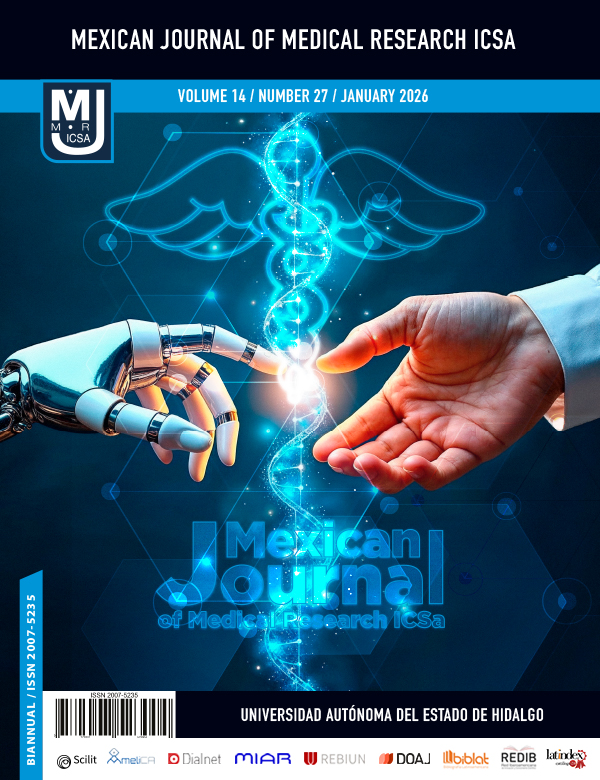Bioethics in the Use of Laboratory Animals, Strategies for Reduction, Replacement, and Refinement in rodents
DOI:
https://doi.org/10.29057/mjmr.v14i27.14572Keywords:
Bioethics, Laboratory Animals, Alternative Models, Animal WelfareAbstract
This literature review addresses the use of animals in scientific research from a bioethical perspective, focusing on the principle of the "3Rs" (Replacement, Reduction, and Refinement). Through a literature search, the strategies needed to reduce the number of animals used, replace them with alternative models, in a search for experimental techniques that minimize their suffering were analyzed. The goal is to promote more ethical and sustainable research, balancing scientific benefits with animal welfare. This review emphasizes the need to adopt innovative and collaborative practices, contributing to science that prioritizes both progress and respect for animal life.
Downloads
Publication Facts
Reviewer profiles N/A
Author statements
- Academic society
- N/A
- Publisher
- Universidad Autónoma del Estado de Hidalgo
References
[1] Fernandes MR, Pedroso AR. Animal experimentation: a look into ethics, welfare and alternative methods. Rev. Assoc. Med. Bras. 2017; 63(11): 923–8.
[2] LaFollette H. Ethics in practice: an anthology. 4th ed. UK: Wiley & Sons; 2014.
[3] Kiani AK, Pheby D, Henehan G, Brown R, Sieving P, Sykora P, et al. Ethical considerations regarding animal experimentation. J. Prev. Med. Hyg. 2022; 63(2 Suppl 3): E255–E266.
[4] Davies GF, Greenhough BJ, Hobson-West P, Kirk RGW, Applebee K, Bellingan LC, et al. Developing a collaborative agenda for humanities and social scientific research on laboratory animal science and welfare. PLoS One. 2016; 11(7): e0158791.
[5] Hobson-West P. The role of ‘public opinion’ in the UK animal research debate. J. Med. Ethics. 2010; 36(1): 46–9.
[6] Ormandy EH, Schuppli CA. Public attitudes toward animal research: a review. Animals (Basel). 2014; 4(3): 391–408.
[7] Ferdowsian HR, Beck N. Ethical and scientific considerations regarding animal testing and research. PLoS One. 2011; 6(9): e24059.
[8] Franco NH. Animal experiments in biomedical research: a historical perspective. Animals (Basel). 2013; 3(1): 238–73.
[9] Guerrini A. Experimenting with humans and animals: from Galen to animal rights. 1st ed. EE. UU. The Johns Hopkins University Press; 2003.
[10] Rudacille D. The scalpel and the butterfly: the war between animal research and animal protection. 1st. ed. EE. UU. Macmillan Publishers; 2000.
[11] Hubrecht RC, Carter E. The 3Rs and Humane Experimental Technique: Implementing Change. Animals (Basel). 2019; 9(10): 754.
[12] Russell WMS. The Three Rs: past, present and future. Anim. Welf. 2005; 14(4): 279–86.
[13] Hansen LA. Institution animal care and use committees need greater ethical diversity. J. Med. Ethics. 2013; 39(3): 188–90.
[14] Tannenbaum J, Bennett BT. Russell and Burch’s 3Rs then and now: the need for clarity in definition and purpose. J. Am. Assoc. Lab. Anim. Sci. 2015; 54(2): 120–32.
[15] Banks RE. The 4th R of research. Contemp. Top. Lab. Anim. Sci. 1995; 34(1): 50–1.
[16] Miranda-de la Lama G, Estévez-Moreno L, Sepúlveda WS, Estrada-Chavero M, Rayas-Amor A, Villarroel M et al. Mexican consumers’ perceptions and attitudes towards farm animal welfare and willingness to pay for welfare-friendly meat products. Meat Sci. 2017; 125: 106–13.
[17] Vinardell Martinez-Hidalgo MP. ¿Existen alternativas a los experimentos con animales? Rev. Bioet. Derecho. 2021; 51: 81–97.
[18] Organisation for Economic Co-operation and Development (OECD). Test No. 420: Acute Oral Toxicity-Fixed Dose Procedure, OECD Guidelines for the Testing of Chemicals, Section 4, Francia: OECD Publishing; 2002.
[19] Delgadillo-Álvarez DMC. Cultivos celulares: reducción histórica en el uso de animales de laboratorio. Rev. Fesahancccal. 2021; 7(1): 17–24.
[20] Romero-Fernandez W, Batista-Castro Z, De Lucca M, Ruano A, García-Barceló M. Rivera-Cervantes M et al. El 1, 2, 3 de la experimentación con animales de laboratorio. Rev. Per. Med. Exp. Salud Pública. 2016; 33(2): 288-99.
[21] Schepelmann M, Kupper N, Gushchina V, Mesteri I, Manhardt T, Moritsch S et al. AOM/DSS Induced Colitis-Associated Colorectal Cancer in 14-Month-Old Female Balb/C and C57/Bl6 Mice-A Pilot Study. Int. J. Mol. Sci. 2022; 23(9): 5278.
[22] Mehmood H, Kasher PR, Barrett-Jolley R, GL Walmsley. Aligning with the 3Rs: alternative models for research into muscle development and inherited myopathies. BMC Vet. Res. 2024; 20 (477).
[23] Ortiz Millan G. Víctimas de la educación. La ética y el uso de animales en la educación superior. Rev. Educ. Sup. 2016; 45(177): 147–70.
[24] International Network for Humane Education [Internet]. Leicester (UK): InterNICHE; [Cited 2025 Abr 10]. Available from: https://www.interniche.org
[25] Norwegian Inventory of Alternatives [Internet]. Oslo (NO): Norecopa; [Cited 2025 Abr 10]. Available from: https://www.norecopa.no/norina
[26] Corte GM, Humpenöder M, Pfützner M, Merle R, Wiegard M, Hohlbaum K et al. Anatomical Evaluation of Rat and Mouse Simulators for Laboratory Animal Science Courses. Animals (Basel). 2021; 11(12): 3432.
[27] Morton D, Jennings M, Buckwell A, Ewbank R, Godfrey C, Holgate B, et al. Refining procedures for the administration of substances. Lab. Anim. 2001; 35(1): 1–41.
[28] Ahrens Kress AP, Zhang Y, Kaiser-Vry AR, Sauer MB. A Comparison of Blood Collection Techniques in Mice and their Effects on Welfare. J. Am. Assoc. Lab. Anim. Sci. 2022; 61(3): 287–95.
[29] Harstad E, Andaya R, Couch J, Ding X, Liang X, Liederer BM, et al. Balancing blood sample volume with 3Rs: implementation and best practices for small molecule toxicokinetic assessments in rats. ILAR J. 2016; 57(2): 157–65.
[30] Sparling JE, Barbeau K, Boileau K, Konkle ATM. Environmental enrichment and its influence on rodent offspring and maternal behaviours, a scoping style review of indices of depression and anxiety. Pharmacol. Biochem. Behav. 2020; 197: 172997.
[31] National Institutes of Health (US). Office for Protection from Research Risks. Public Health Service policy on humane care and use of laboratory animals. UU. EE. National Institutes of Health; 1986.
[32] Pereira S, Tettamanti M. Ahimsa and alternatives-the concept of the 4th R. The CPCSEA in India. ALTEX. 2005; 22(1): 3–6.
[33] Canadian Council on Animal Care. Reproducibility-is it a Fourth R? [Internet]. 2019. [Cited 2025 Abr 10]. Available from:https://ccac.ca/Documents/Publications/CCAC_Reproducibility-Is-it-a-Fourth-R.pdf.
Downloads
Published
How to Cite
Issue
Section
License
Copyright (c) 2025 Jaime René Hernández López

This work is licensed under a Creative Commons Attribution-NonCommercial-NoDerivatives 4.0 International License.






















